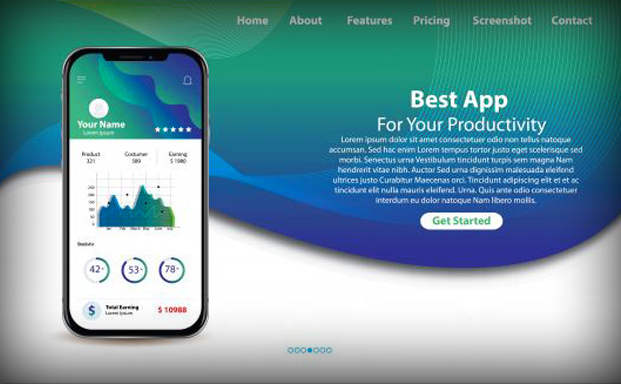Graphic Design and Web Design Courses Gwynedd
They say a picture is worth a thousand words.. The photos provide the required visual references for descriptive and explanatory purposes. Graphic designers will help explain complex concepts and promote initiatives in education. You can frame and background a document. Once the right picture is put on top, the mood of a piece can be set instantly.
Photography can only go so far, however. Marketing campaigns often include original artwork, which cannot be captured with a camera lens. These pictures have to be planned. We need a structured approach that combines the aesthetics of the picture with the message to be conveyed. The discrepancies between successful and flat visual contact can also be very subtle.
That is why professional graphic design is essential for your marketing as copywriting, market analysis, and all the other disciplines that produce it. If the graphic design is done right, it looks like it is supposed to be where it is. It’s easy to take for granted.
Graphic Design shapes your Brand Identity
Brand identities are central to all the marketing activities of a company. Designers describe what it is, what it stands for, and how it is used by customers. They are the face of the business, which is instantly recognised.
And by mistake, they don’t happen. They must be planned. Your logo, colour palette, iconography, font choices, and other brand elements work together to construct a consistent visual language in which your piece of marketing collateral is crafted. It takes a trained eye to make sure they interact appropriately and function harmoniously to increase awareness of the brand, rather than contradicting each other.

Take into account some of the famous brands. One just has to glance at the top of the golden arches to realise that the McDonalds are on the way. An apple with a missing bite conveys a techno-cool hipster. The Google brand can be identified automatically from its colour palette, even though its logo is absent.
That is the beauty of the graphic design. The paragraphs of the text can be replaced by a simple picture communicating in a glance. Typically called are icons. Good graphic design is a stand-in for the emotional connexions people create with their brands.
Fundamentals of Graphic Design
Nearly half of our brain’s neurons are involved in visual information processing directly or indirectly. We are visual beings and process information visually much more rapidly and effectively than in any other sense. In a couple of 13 milliseconds, we can recognise images, and it is estimated that 80 % of people are visual learners.
Our brains are programmed to interpret visual details, meaning that graphic design is a fundamental element for all communication. People take more sense from good graphic design and do it more quickly than from text, music, jingles, or storeys.
Which is more effective, blocks of text that lists a dense collection of facts, or an attractive group of charts and charts that contain the same information? The visual examples are easier to understand, and the concepts to be gleaned can be learned and remembered even better. Graphic design cannot, therefore, be dismissed.

Effective Graphic Design Creates Better Marketing
The lesson ought to be simple. The visual components can never be an afterthought when designing a marketing plan. You should not write a piece of content and instead put in some pictures to support it. You don’t want to pull a piece of clip art, just give it your name and your logo.
People are happy to forgive bad writing as long as they obtain the necessary facts. Many people don’t even notice poor writing because they simply don’t care. We instantly notice it, and it defiles our responses to the messages that it follows.
On the other hand, good design will increase all your marketing materials and encourage them to interact with less. Imaging that aligns the messages immediately, both on an emotional and subconscious level connects with people. It gives visual sights to the viewer that helps them navigate your content and mental hooks to pick up your messages profoundly.
Marketing is the art of persuasion at its core. In order to be compelling, a message must resonate with the audience. We know that good architecture is covering half the brain of the spectator. It tracks mentally, physically, viscerally, and spiritually in specific individuals. Conviction is most successful when a holistic approach is implemented, which ensures that graphic design is the beating heart of marketing.

Graphic Design and UX Design – Are they Similar?
All graphic designers and UX designers seek to develop an emotional connexion with users:
The graphic design aims to elicit users’ emotions through light, graphics, and typography.
UX designers also emotionalise, but they are not confined to the visual part of the design. They concentrate on web architecture, interface design, and user access. This allows a better understanding of the overall product consumer experience.
Innovative thought and the solution of interface concerns are equally professional in graphic designers and UX designers.
To understand how creative thinking helps UX design, design thinking needs to be explained first because often, the process of UX design relies on design thinking methodology. Project thinking is a continuous process that evolves and moves through the following phases: empathising, recognition, development, prototyping, and testing.
Problems are presented in every process, and questions and ideas emerge before the best answers are apparent. Creative thinking draws on logic, creativity, and intuition for exploring new concepts and for maximising outcomes for the end-user.
Graphic Design Introductory Course by Blue Sky Graphics
The purpose covers a brief history summary and current application related to the design of colleagues and customers as well as relevant knowledge related to technology and design.
Identify the intent, public, and audience requirements for image preparation.
Determine if the content is essential to the mission, public, and needs of the audience.
Understanding the basic distinctions between creativity and innovation, creative/design and flow
Prove to understand the basic principles of project management.



